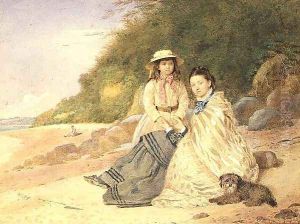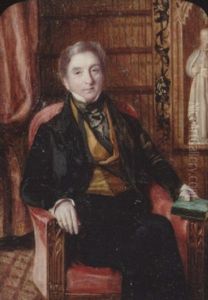Alfred Tidey Paintings
Alfred Tidey was an English artist born in the early 19th century, recognized for his work as a portrait miniaturist. Although not as widely known as some of his contemporaries, Tidey's work was admired for its detail and the skill with which he captured the likenesses and characters of his subjects.
Alfred Tidey was born in 1808 in England. Not much is widely recorded about his early life or artistic training, which is common for many artists of the period whose lives were not as well-documented as the most famous painters of their time. Nevertheless, Tidey managed to establish himself as a skilled artist in the tradition of miniature painting, which was a highly popular art form during the Georgian and Victorian eras in Britain.
Tidey's miniature portraits were typically painted in watercolor on ivory—a standard medium for miniatures of the time. This form of portraiture was especially favored before the advent of photography for its ability to convey a person's likeness in a small, portable format. Tidey's clientele would have included the middle and upper classes, who sought to have their portraits made for personal keepsakes or to give as gifts to loved ones.
Throughout his career, Tidey exhibited at the Royal Academy of Arts in London, which was an essential venue for artists seeking to gain recognition and sell their works. Exhibiting at the Royal Academy was a mark of an artist's seriousness and professional standing. Tidey's works were shown there from the 1830s to the 1860s, indicating that he enjoyed a lengthy and stable career.
Alfred Tidey passed away in 1892. Although he may not have achieved the same level of fame as some of his contemporaries, his miniatures remain a testament to the skill and dedication of portrait miniaturists of the 19th century. Today, his works are of interest to collectors and historians who appreciate the artistry of miniature painting and the glimpse it provides into the faces and fashions of the past.

